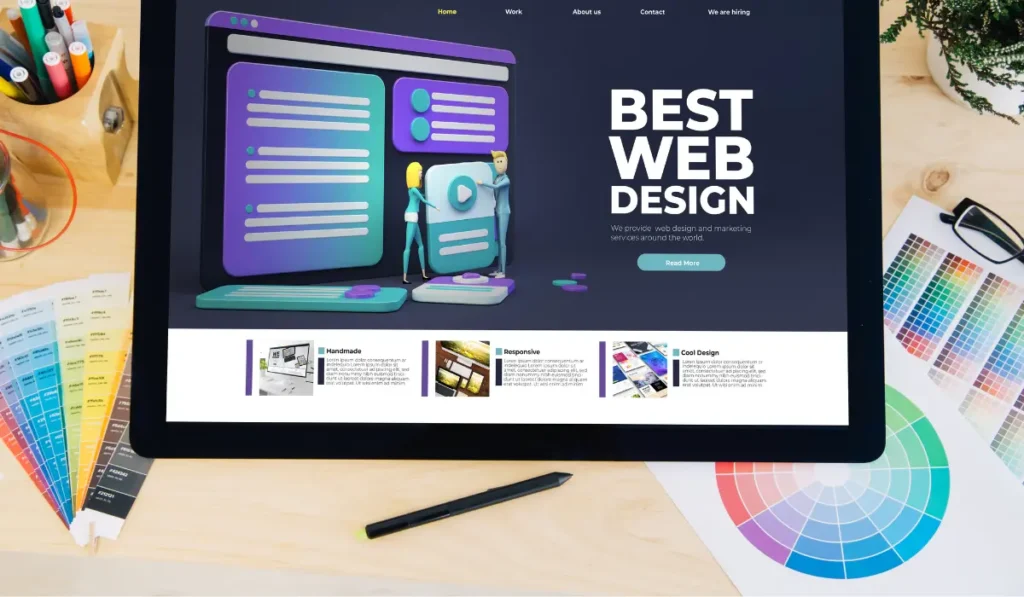Building a website can seem like a daunting task, especially if you’re not sure where to start. However, with the right tools and resources, building a website can be a rewarding and satisfying experience. In this article, we’ll explore the essential things you need to build a website and how to get started.
Essential Components of a Website
Before you start building your website, it’s important to understand the essential components that make up a website. These include:
Domain name
A domain name is the unique address users type into their web browser to access a website. For example, “www.google.com” is a domain name. Choosing a domain name is an important part of building a website, as it will be how users access your site.
Web hosting
Web hosting is a service that stores your website’s files and makes them available to users online. When you build a website, you will need to choose a web hosting provider to host your site. There are many web hosting providers to choose from, offering a range of plans and features.
Website builder
A website builder is a tool that allows you to create and customize a website without writing any code. There are many website builders to choose from, ranging from simple drag-and-drop tools to more advanced platforms with advanced features.
Content
Content is the information and media that you publish on your website. This can include text, images, videos, and other types of media. It is important to plan and create high-quality, relevant content for your website, as this will help to attract and engage users.
Steps to Building a Website
Now that you understand the essential components of a website, you can begin the process of building your own website. Here are the steps to follow:
Choose a domain name
The first step in building a website is choosing a domain name. As mentioned earlier, your domain name is the unique address users type into their web browser to access your website. When choosing a domain name, consider the following:
- Make it memorable and easy to spell
- Keep it short and concise
- Consider including relevant keywords
- Choose a top-level domain, such as “.com,” “.net,” or “.org”
Choose a web hosting provider
After you have chosen a domain name, you will need to choose a web hosting provider. There are many web hosting providers to choose from, each offering different plans and features. Consider the following when choosing a web hosting provider:
- Type of hosting: There are several types of hosting to choose from, including shared, VPS (Virtual Private Server), and dedicated hosting. Choose the type of hosting that is best suited for your website’s needs.
- Storage and bandwidth: Consider the amount of storage and bandwidth you need for your website. If you plan to have a lot of media or expect a lot of traffic, you will need more storage and bandwidth.
- Price and value: Compare the prices and features of different web hosting providers to find the best value for your needs.
- Choose a website builder.
Next, you will need to choose a website builder. There are many website builders to choose from, ranging from simple drag-and-drop tools to more advanced platforms with advanced features. Consider the following when choosing a website builder:
- Ease of use: Choose a website builder that is easy to use, even if you have little or no coding experience.
- Features and customization: Consider the features and customization options offered by the website builder. Does it have the tools and templates you need to create the type of website you want?
- Price: Compare the prices of different website builders to find the best value for your needs.
Design and build your website
Once you have chosen a domain name, web hosting provider, and website builder, you can begin designing and building your website. Follow these steps to design and build your website:
Plan your website’s content and structure
Before you start building your website, planning its content and structure is important. Consider the purpose and goals of your website and what type of content and features you want to include. Create a rough outline or sitemap to help guide the design and development process.
Choose a website design and layout.
Next, choose a design and layout for your website. This can include selecting a color scheme, font, and overall look and feel for your site. You can use a pre-designed template or create a custom design.
Add content to your website.
Now that you have a structure and design in place, it’s time to add content to your website. This can include text, images, videos, and other types of media. Be sure to create high-quality, relevant content that will help to attract and engage users.
Test and publish your website
Before you publish your website, be sure to test it to ensure that it is functioning properly and looks good on different devices. Once you are satisfied with your website, you can publish it and make it live for the world to see.
Final Thoughts
In conclusion, building a website requires a domain name, web hosting, and a website builder. By following the steps outlined in this article, you can successfully build a website that meets your needs and goals. If you need help building a website, our web design services team is here to assist you. Contact us today to learn more.



